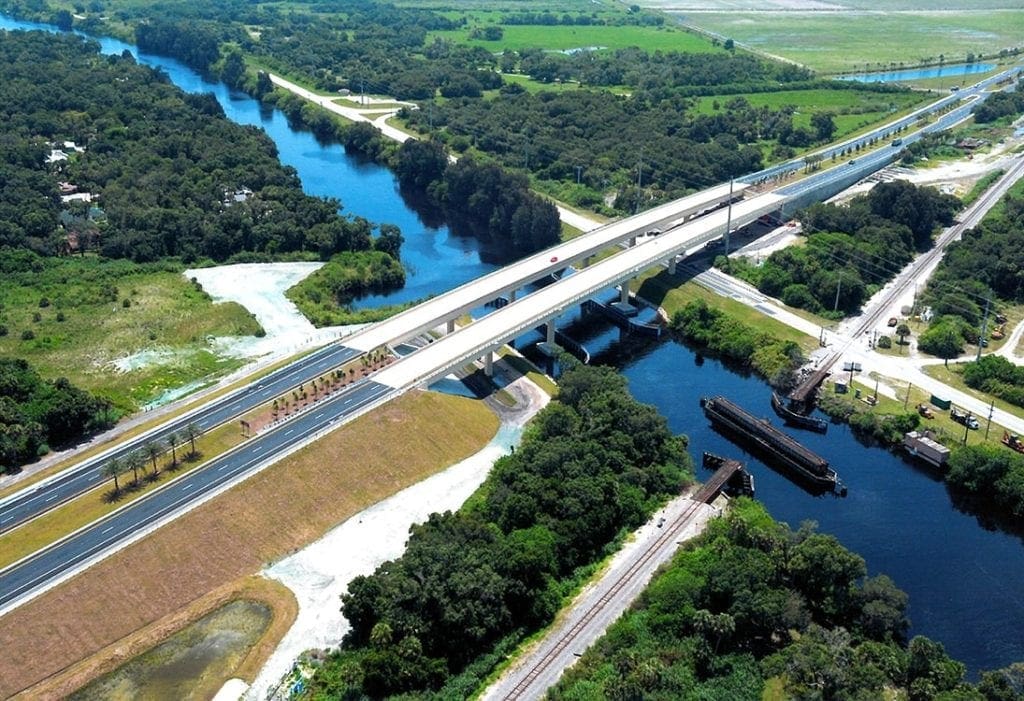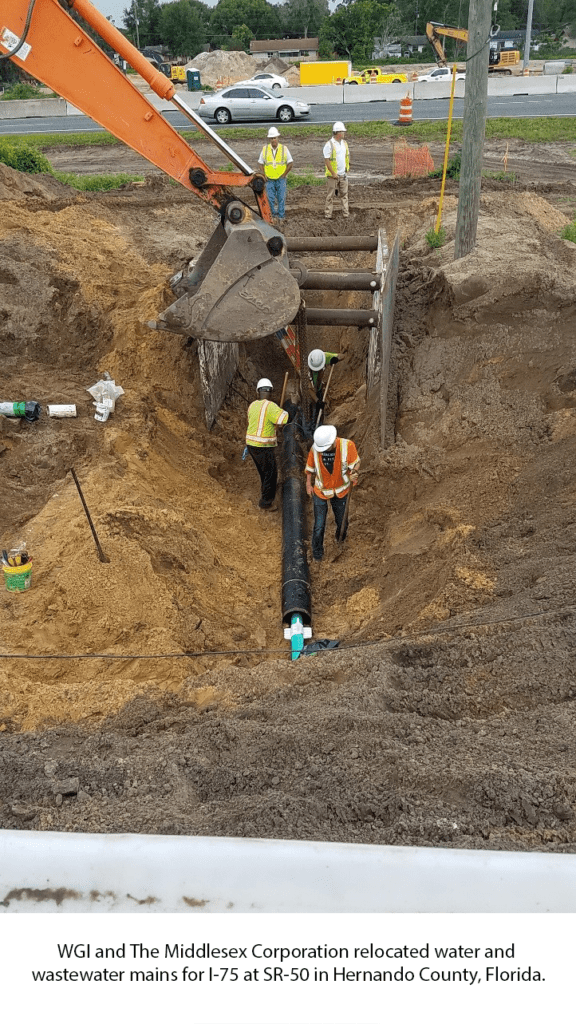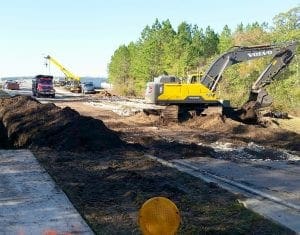
WGI’s Nancy Clements, PE, selected as the 2021 WTS Central Florida Woman of the Year
This award honors a woman who is an outstanding role model and has contributed to the advancement of women and minorities in transportation.
Learn from award-winning professionals — explore our whitepapers, blogs, and the latest industry updates.
Join our dynamic organization of engineers, land surveyors, landscape architects, environmental scientists, and architects!
Talk to a market leader today! We’ll answer any questions you have about our professional services.

Traditional public infrastructure projects were typically completed through the Design-Bid-Build process. This required the owner—public entities such as cities, counties, and states—to determine the need for a project, study potential impacts, and plan the schedule and budget. Then the owner hired professionals to design the project; produce plans, specifications, and cost estimates; and obtain permits. The owner then advertised the project for construction companies to submit a bid consisting of their qualifications and price. Finally, the owner evaluated bids and awarded the project to a construction company to build the improvements. Depending on the size and objective, projects took years or sometimes decades to complete, and required the owner to manage multiple contracts with design and construction professionals.

Due to its effectiveness, more owners are now using the Design-Build process for building public infrastructure. In the Design-Build method, the owner determines a project’s conceptual scope, budget, and schedule (typically produced from preliminary studies and planning by internal staff or contracted professionals), and then advertises the request for proposals. Interested construction companies and design professionals join together as a team to develop their best project delivery approach. This begins the owner’s control of quality, schedule, and cost — builders and designers competing together, perhaps a successful team from previous Design-Build projects, to deliver the best product. The owner selects a short list of teams based on qualifications and knowledge of the project demonstrated in their proposals. The shortlisted teams submit their proposals, which contain different designs, schedules, and prices for the owner to consider. Alternatively, in the Progressive Design-Build method, only the most qualified team selected by the owner submits their price proposal, which the owner has the option to accept, negotiate, or reject and move on to the next most qualified team.
After the owner makes the final selection and awards the Design-Build contract, this delivery method’s full benefits are realized. Design, permitting, and construction phases are integrated into the overall project rather than performed in succession. The Design-Build team effectively plans the critical path, and the design professionals plan and permit the work to accommodate the schedule. Construction may begin as soon as certain project elements are designed and permitted, rather than waiting for the entire project to be designed and permitted. Designers and builders continue their collaboration to determine the best designs, materials, and methods to employ while meeting owner and regulatory requirements. Construction experts have the opportunity to provide input during the design phase before any formal submittal is made to the owner. Similarly, during construction, designers and builders work together in real time to overcome constructability issues and unforeseen conditions.
Upon completion of a Design-Build project, the owner has observed and documented its success. One of the first benefits realized is a cost reduction due to inflation since the contract price was established earlier than a Design-Bid-Build project. Another significant benefit to the owner is the contract structure, in which the design professionals are typically subcontractors to the prime construction company. This reduces the number of contracts managed by the owner, thereby saving time and resources. Additional benefits to the owner include a condensed schedule and shifting more of the risk to the Design-Build firm. Finally, with improved quality, optimized schedules, and professional competition, the most politically and publicly scrutinized project element—COST—is clearly reduced in comparison to historical Design-Bid-Build projects.

In addition to this qualitative analysis, quantitative examples are available. WGI’s experience includes many successful Design-Build projects, including the Big John Monahan Bridge for the FDOT District 4 that was awarded the Design-Build Institute of America (DBIA) Florida Best Overall Project of the Year (see photograph above). This $32M project was completed 104 days ahead of schedule and saved an estimated $25M through efficient designs and construction methods, including reducing the bridge length through static acquisition of roadway. A study produced by the FDOT reported that an 814-day $55M Design-Bid-Build project would have saved $6M and 656 days using the Design-Build delivery method (website link: DB vs DBB Internal FDOT Study March 2014.pdf). The Florida Engineering Society’s October 2017 Journal featured multiple articles on alternative delivery, including a $25.9M project of over 67,000 linear feet of pipeline in Hillsborough County that was constructed within budget and schedule, without a change order, and contingency funds were returned to the owner. Additionally, the DBIA gave a City of Fort Lauderdale project its Project of the Year award for a directionally drilled water main that was completed 20% faster than the traditional Design-Bid-Build method
Going forward, infrastructure that functions for the health, safety, and welfare of the public should no longer be subject to the detrimental low-bid process. The design and building industries, public entities, and taxpayers should expect the proven methods of qualifications-based selection and Design-Build delivery to continue. Aligning responsibilities and risk by joining the forces that depend so heavily upon each other, benefits all parties—especially the taxpayer.

WGI is a national design and professional services firm leading in technology-based solutions for the construction of public infrastructure and real estate development. At WGI, we’re providing Tomorrow’s Infrastructure Solutions Today.

This award honors a woman who is an outstanding role model and has contributed to the advancement of women and minorities in transportation.

WGI received an Honor Award from the Design-Build Institute of America (Florida) for the Kernan Boulevard from Atlantic to McCormick Design-Build Project.

Transportation professionals from around the world recently gathered for the Transportation Research Board (TRB) Annual Meeting in Washington, DC. Here are the biggest takeaways that will color our perspective on transportation and mobility issues in 2022 and beyond.

WGI is celebrating EWeek 2020 by honoring all of our dedicated engineers, and engineers around the world that have made a positive contribution to our profession.

The Design-Build project was completed an impressive 15 days ahead of schedule.
You’ve been searching for a place like WGI. We look forward to meeting you soon.
Sign up to receive emails to hear our latest news and achievements in our monthly newsletter.
Enter your zip code, and we’ll personalize your experience with local projects, office locations, team members, and more.
WGI supports its associates with meaningful opportunities for growth, strong benefits and perks, while we work collaboratively with clients and co-consultants to shape and improve communities.






WGI is a dynamic organization with opportunities nationwide for engineers, land surveyors, landscape architects, environmental scientists, and architects.